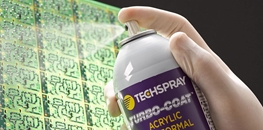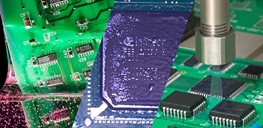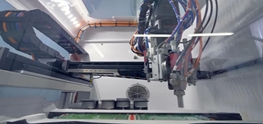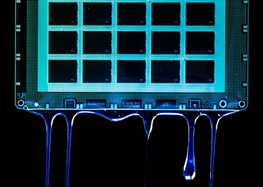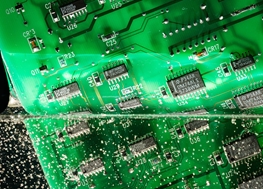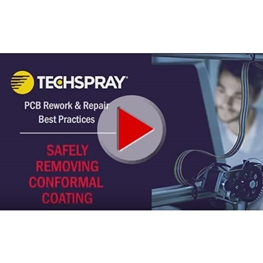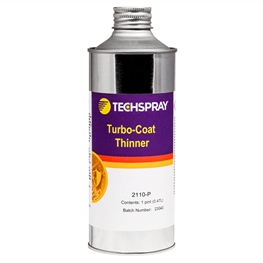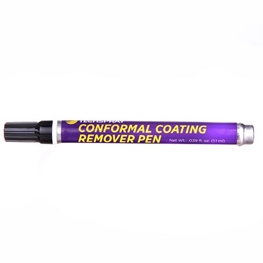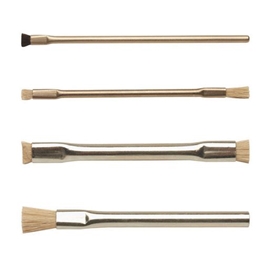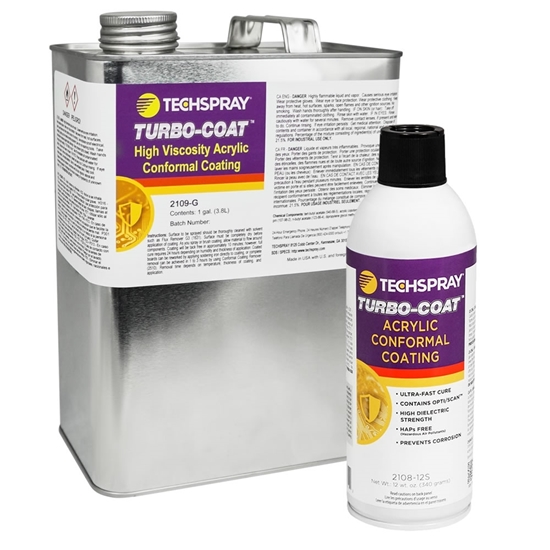
Turbo-Coat Acrylic Conformal Coating
Acrylic Conformal Coating with the fastest cure, dry to touch in 3 minutes!
FAQ's
What is the difference between full cure and tack-free cure?
Full cure is when it meets all the final specifications. There might be some out-gassing, but it will be as hard as it is going to be, and adhesion is as good as it gets. Tack-free is as the name suggests, not sticky so you can move it along the assembly process.
What is the difference between dielectric strength and dielectric withstand voltage?
The dielectric strength is material intrinsic property and withstand voltage is surface property which depend on thickness of the material. They can be slightly different for thicker materials, but for conformal coating, the two numbers should be very close or the same. That is because we test coating at 3-5 mils thickness, calculate, then report the value per mil.
What type of UV light / black light should I use for QC inspection of the final conformal coating?
Conformal coating with UV tracer can be inspected with any typical UV lamp which has wavelength of 320-380 nm.
Articles
VIDEO: Conformal Coating Frequently Asked Questions
Join Nicole Bass, Techspray Product Manager, as she addresses common conformal coating queries. Safeguard electronics effectively w/ expert insights.
Read This Post
WEBINAR: Conformal Coating Defects -- How To Diagnose, Repair & Prevent
Applying conformal coating without defects like bubbles, ripples, and open areas can be challenging. Techspray and PVA discuss how to diagnose and prevent defects and improve production throughput and final device reliability.
Read This Post
Top 10 Mistakes When Spraying Conformal Coating on a Printed Circuit Board Assembly
In this article, we will explore the top 10 mistakes to avoid when spraying conformal coating on a circuit board. By identifying and understanding these common mistakes, you can ensure that your conformal coating process is successful and your electronic components are protected.
Read This Post
3 Testing Standards That Separate Conformal Coating From Shellac
As an electronic manufacturing services (EMS) supplier, you are required to think on your feet and are forced to gain new capabilities as your customers’ specification change. This can be daunting, especially when you try to bring conformal coating manufacturing in-house and make material and equipm...
Read This Post
How To Identify and Cure The Top 7 Conformal Coating Defects
In this post well take a look at the 7 common conformal coating defects, their causes, and how to prevent. Read this post to avoid issues in your conformal coating process selection and application.
Read This Post
The Essential Guide to Conformal Coating
Conformal coating improves PCB reliability, providing increased dielectric resistance, operational integrity, and protection from corrosive atmospheres, humidity, heat, fungus, and airborne contamination such as dirt and dust. Conformal coating are a special polymeric film forming product that prote...
Read This Post
Video Guide to Removing Conformal Coating
Today I’m going to cover the process of removing conformal coating from a printed circuit board using a solvent-based coating remover or “stripper”. This might be required when repairing or refurbishing electronic devices. There are solvents that are effective of acrylic, silicone and urethane confo...
Read This Post
You did not finish submitting your information to request a sample

